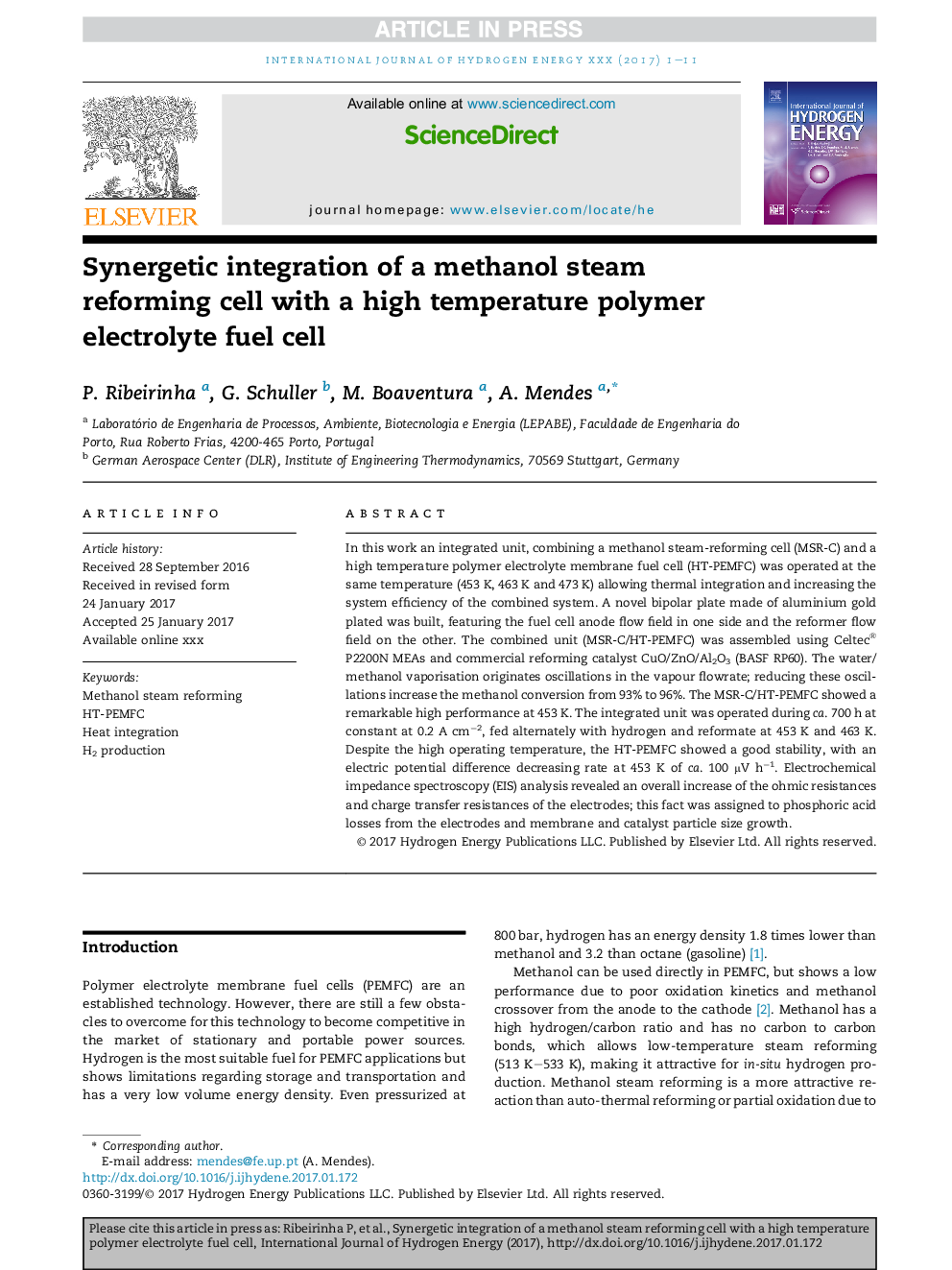| Article ID | Journal | Published Year | Pages | File Type |
|---|---|---|---|---|
| 5147334 | International Journal of Hydrogen Energy | 2017 | 11 Pages |
Abstract
In this work an integrated unit, combining a methanol steam-reforming cell (MSR-C) and a high temperature polymer electrolyte membrane fuel cell (HT-PEMFC) was operated at the same temperature (453 K, 463 K and 473 K) allowing thermal integration and increasing the system efficiency of the combined system. A novel bipolar plate made of aluminium gold plated was built, featuring the fuel cell anode flow field in one side and the reformer flow field on the other. The combined unit (MSR-C/HT-PEMFC) was assembled using Celtec® P2200N MEAs and commercial reforming catalyst CuO/ZnO/Al2O3 (BASF RP60). The water/methanol vaporisation originates oscillations in the vapour flowrate; reducing these oscillations increase the methanol conversion from 93% to 96%. The MSR-C/HT-PEMFC showed a remarkable high performance at 453 K. The integrated unit was operated during ca. 700 h at constant at 0.2 A cmâ2, fed alternately with hydrogen and reformate at 453 K and 463 K. Despite the high operating temperature, the HT-PEMFC showed a good stability, with an electric potential difference decreasing rate at 453 K of ca. 100 μV hâ1. Electrochemical impedance spectroscopy (EIS) analysis revealed an overall increase of the ohmic resistances and charge transfer resistances of the electrodes; this fact was assigned to phosphoric acid losses from the electrodes and membrane and catalyst particle size growth.
Related Topics
Physical Sciences and Engineering
Chemistry
Electrochemistry
Authors
P. Ribeirinha, G. Schuller, M. Boaventura, A. Mendes,
